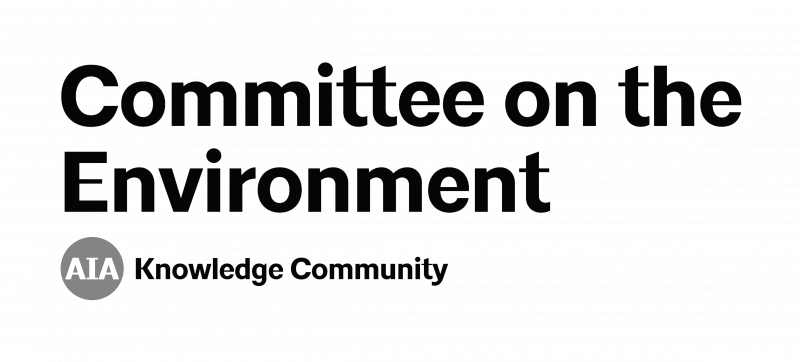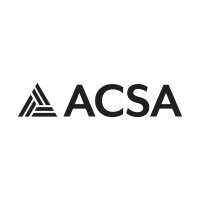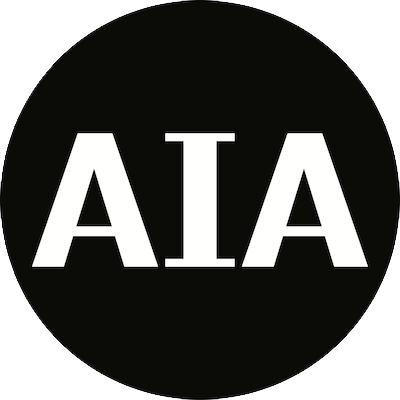Submission Deadline: June 7, 2023
2023 COTE Competition
AIA COTE® Top Ten for Students
Registration
Eligibility
An ACSA member school, faculty sponsor is required to enroll students by completing an online registration form prior to submission by April 5, 2023. The competition is open to students from all ACSA Full and Candidate Member Schools, as well as ACSA Affiliate Members Schools including international member schools. Students are required to work under the direction of a faculty sponsor. Submissions will be accepted for individual as well as team projects. Teams must be limited to a maximum of three students.
Students are invited to submit their studio projects. Entries must be buildings, but can be of any program, at any scale, in any location. Projects can be a remodel or adaptive re-use. Work should have been completed in a design studio or related class within the 2022-2023 calendar year. Projects completed in the Spring 2022 are eligible to submit, due to the competition calendar shift.
Faculty Sponsor Online Registration
One Registration for Each Entry
Complete one online form for each individual student or team of students participating. Students or teams wishing to enter the competition on their own must have a faculty sponsor, who should complete the online registration form. There is no entry or submission fee to participate in the competition. Please add the email address competitions@acsa-arch.org & ACSACompetition@mirasmart.com to your address book to ensure that you receive all emails regarding your participation in the competition.
During registration faculty will have the ability to add students and create teams. Registration is required by April 5, 2023, but can be changed, edited and added to until a student begins their final submission.
Faculty Registration Steps
- Faculty log into the ACSA website,
- Click the “Register your Students NOW” button,
- Select the 2023 COTE Competition from the submission type dropdown menu & Click “Enter”,
- Select “Individual Registration” to add individual student. Click “Save and Continue”. You will need to know each student’s first & last names, email, & institution, which are all required fields for each student,
- Select “Team Registration” if this is a team registration, you may add additional students by clicking “Add Student” to the same submission to this team, teams must be limited to a maximum of three students,
- Once the individual student or team is complete, Click “Submit”,
- Repeat steps 3 – 6 for each individual or team.
Faculty Responsibility
The administration of the competition at each institution is left to the discretion of the faculty within the guidelines set forth in this document. Work should have been completed in a design studio or related class within the 2022-2023 calendar year. Design work completed before Spring 2022 will not be accepted.
Each faculty sponsor may develop an internal system to evaluate the students’ work using the criteria set forth in this Competition Program and the Studio Guide. The evaluation process should be an integral part of the design process, encouraging students to scrutinize their work in a manner similar to that of the jury. The final result of the design process will be a submission of two presentation boards and a narrative describing the design solution and approach to the each of the ten measures of the Framework for Design Excellence.
Rules
Submission Materials & Requirements
The COTE Top Ten for Students Competition seeks compelling design submissions that meaningfully address the future impacts of climate change, imagine and illustrate a healthy, sustainable and equitable future. Emphasis shall be placed on achieving zero emissions, design for climate change and resilience, and addressing social equity and ecology.
The Framework for Design Excellence shall serve to inform the design process and guide the required graphics and written narratives/abstract. Students or student teams must submit the following materials online:
1. Graphics: No more than two (2) digital boards at 24”x36” (JPEG files, no more than 20MB each), to include the following:
Documentation must adequately convey the project’s relationship to topography and physical context, formal and programmatic organization, circulation patterns, and experiential qualities. All drawings should be labeled; indicate scale and orientation where necessary. At minimum, include the following:
– Site or context plan
– Floor plans
– Building / site sections
– Perspective or isometric view (digital rendering or model photograph)
Present diagrams or images that best display how the project meets the design criteria by considering the ten measures of the Framework for Design Excellence. Some measures may require a specific graphic or calculation; others are open-ended. Where applicable, provide labels and notes on how calculated metrics are obtained (basis, method, program used, and assumptions).
2. Abstract/Narrative: (100 words maximum for each sustainability measure for a total of 1,000 word maximum). Project/concept statement (approach/program/intentions/strategies). Narratives should answer as many questions as possible posed in the ten measures, with deepest attention to achieved measures most in alignment with the project. The specific questions for each measure are meant to be a guide; each one does not need to be answered. *During submission, simply copy/paste this text into the “Abstract” text field.
3. Program Brief: (500 words maximum) Submissions should include a brief description the building type, gross square footage, project location & climate zone.
*During submission, simply copy/paste this text into the “Program” text field.
Incomplete or undocumented entries will be disqualified. All drawings should be presented at a scale appropriate to the design solution and include a graphic scale and north arrow.
Project authorship must remain anonymous. The names of student participants, their schools, or faculty sponsors, must NOT appear on the boards, narrative/abstract or project title. If authorship is revealed on any submission materials the entry will be disqualified.
All metrics should include a short description of key assumptions used in the analysis and where the numbers came from and reliability.
Online Project Submission
After the faculty sponsor completes the online registration, each student will receive a confirmation email, which will include a link to complete the online submission. All boards are required to be uploaded through the ACSA website in JPEG files (no more than 20MB each). Participants should keep in mind that, due to the large number of entries, preliminary review does not allow for the hanging end- to-end display of presentation boards. Accordingly, participants should not use text or graphics that cross over from board to board.
Project authorship must remain anonymous. The names of student participants, their schools, or faculty sponsors, must NOT appear on the boards, narrative/abstract or project title. If authorship is revealed on any submission materials the entry will be disqualified.
Students are required to upload final submissions by 11:59 pm Pacific Time on June 7, 2023. If the submission is from a team of students, all student team members will have the ability to upload the digital files.
Submissions may be edited and updated until the submission deadline of 11:59 pm, Pacific Time, June 7, 2023. Once the final submission is uploaded and submitted, each student will receive a confirmation email notification.
Please Note: the submission is not complete until the “Submit” button has been pressed. For teams: each member of team may submit or edit the final project till the deadline of 11:59 pm Pacific Time on June 7, 2023.
Winning projects will be required to submit high-resolution original files/ images for use in competition publications and exhibit materials. By uploading your files, you agree that the American Institute of Architects (AIA) and the Association of Collegiate Schools of Architecture (ACSA) have the rights to use your winning submission, images and materials in a summary publication, online and in promotional and exhibition resources. AIA and ACSA will attribute authorship of the winning design to you, your team, faculty, and institutional affiliation. Additionally, you hereby warrant that the submission is original and that you are the student author(s) of the design submission.
Competition Organizers & Sponsors
Edwin Hernández
Programs Coordinator
202-785-2324
ehernandez@acsa-arch.org
Eric W. Ellis
Senior Director of Operations and Programs
202-785-2324
eellis@acsa-arch.org

 Study Architecture
Study Architecture  ProPEL
ProPEL 



